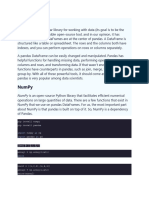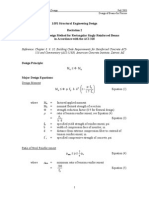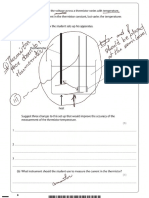0% found this document useful (0 votes)
20 views13 pagesFha-Pyhton Program Unit 1-4
The document provides Python code for various statistical analyses, including frequency distribution, regression, correlation, and one-way ANOVA. It includes functions for generating data, calculating regression coefficients, visualizing data, and evaluating models. Additionally, it demonstrates how to interpret correlation coefficients and perform ANOVA using data from an Excel file.
Uploaded by
selvanveera123Copyright
© © All Rights Reserved
We take content rights seriously. If you suspect this is your content, claim it here.
Available Formats
Download as PDF, TXT or read online on Scribd
0% found this document useful (0 votes)
20 views13 pagesFha-Pyhton Program Unit 1-4
The document provides Python code for various statistical analyses, including frequency distribution, regression, correlation, and one-way ANOVA. It includes functions for generating data, calculating regression coefficients, visualizing data, and evaluating models. Additionally, it demonstrates how to interpret correlation coefficients and perform ANOVA using data from an Excel file.
Uploaded by
selvanveera123Copyright
© © All Rights Reserved
We take content rights seriously. If you suspect this is your content, claim it here.
Available Formats
Download as PDF, TXT or read online on Scribd
/ 13























































































